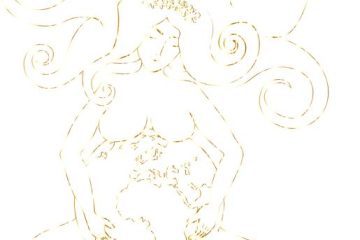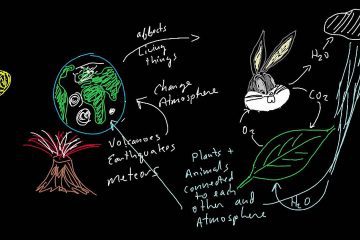In the vast web of interconnected ecosystems, a theory emerges that challenges conventional thinking about our planet’s intricate balance – the Gaia hypothesis. Proposed by scientist James Lovelock in the 1970s, this radical concept suggests that Earth functions as a self-regulating organism, where living organisms and the environment coexist in a delicate dance of harmony. Let’s journey into the heart of this captivating idea, exploring its origins, implications, and ongoing influence on our understanding of the natural world.
Table of Contents
- – Unveiling the Intricacies of the Gaia Hypothesis: A Deep Dive into Earth as a Complex Organism
- – Gaia Hypothesis: Exploring the Interconnected Web of Life on Our Planet
- – Embracing Gaia: Practical Steps to Foster Harmony and Balance with Earth
- Q&A
- To Wrap It Up
– Unveiling the Intricacies of the Gaia Hypothesis: A Deep Dive into Earth as a Complex Organism
Exploring the Gaia Hypothesis takes us on a journey beyond conventional perspectives, delving into the profound interconnectedness of Earth’s systems. This theory, proposed by scientist James Lovelock and biologist Lynn Margulis, suggests that our planet functions as a self-regulating organism, maintaining conditions conducive to life.
Imagine Earth as a living being, adapting and evolving to sustain life forms. From the intricate web of ecosystems to the global climate patterns, every component plays a crucial role in maintaining a delicate balance. This holistic view of Earth challenges us to perceive our planet not merely as a collection of disparate parts, but as a unified and sentient entity.

– Gaia Hypothesis: Exploring the Interconnected Web of Life on Our Planet
The Gaia Hypothesis presents a captivating perspective on the intricate interconnectedness of life on Earth. It proposes that our planet functions as a single, self-regulating organism wherein living organisms and their inorganic surroundings form a complex, symbiotic system. This holistic view challenges traditional scientific paradigms, inviting us to contemplate the profound interdependencies that sustain life.
Imagine the Earth as a vast, harmonious web of relationships, where every species, ecosystem, and element plays a vital role in maintaining balance. From the microscopic bacteria in the soil to the majestic trees in the rainforest, each entity contributes to Gaia’s intricate tapestry. Embracing the Gaia Hypothesis encourages us to appreciate the beauty and resilience of our planet, fostering a deep sense of interconnectedness and responsibility for preserving this precious ecosystem for future generations.

– Embracing Gaia: Practical Steps to Foster Harmony and Balance with Earth
Exploring the interconnectedness of all living beings and the Earth itself, the Gaia hypothesis proposes a harmonious relationship between organisms and their environment. **Embracing Gaia** involves adopting practices that honor this symbiotic connection, fostering harmony and balance with our planet. By incorporating simple yet impactful steps into our daily lives, we can contribute to the well-being of the Earth and support a more sustainable future.
One practical way to align with Gaia is by **practicing mindfulness** in our consumption habits. Consciously choosing products that are environmentally friendly, sustainably sourced, and biodegradable can significantly reduce our ecological footprint. Additionally, **connecting with nature** through outdoor activities like hiking, gardening, or simply spending time in green spaces allows us to appreciate the beauty of the Earth and cultivate a deeper sense of gratitude for its wonders.
Q&A
**Q&A: Exploring the Intriguing Gaia Hypothesis**
Q: What is the Gaia hypothesis all about?
A: The Gaia hypothesis proposes that the Earth is a self-regulating organism, with all living and non-living components interacting to maintain conditions suitable for life.
Q: Who first proposed the Gaia hypothesis?
A: The Gaia hypothesis was proposed by scientist James Lovelock and microbiologist Lynn Margulis in the 1970s.
Q: How does the Gaia hypothesis differ from traditional views of the Earth?
A: Unlike traditional views that considered Earth as a passive vessel, the Gaia hypothesis suggests that the Earth itself behaves like a living organism with the ability to self-regulate.
Q: What evidence supports the Gaia hypothesis?
A: Evidence supporting the Gaia hypothesis includes the regulation of temperature, atmospheric composition, and ocean salinity over billions of years, all of which have remained within the narrow range required for life to thrive.
Q: Can the Gaia hypothesis help us better understand climate change?
A: Yes, the Gaia hypothesis offers a unique perspective on climate change, emphasizing the interconnectedness of Earth’s systems and highlighting the importance of maintaining a balance to sustain life on our planet.
Q: Are there any criticisms of the Gaia hypothesis?
A: Critics argue that the Gaia hypothesis personifies the Earth and may oversimplify the complex interactions within ecosystems. However, the hypothesis has sparked valuable discussions on the interdependence of living organisms and the environment.
Q: How can individuals contribute to Gaian principles in their daily lives?
A: By promoting sustainability, reducing carbon footprint, and supporting conservation efforts, individuals can play a part in preserving the delicate balance of Earth’s systems, in alignment with the principles of the Gaia hypothesis.
Explore the fascinating concept of the Gaia hypothesis and delve into its implications for our understanding of the dynamic relationship between life and the planet we call home.
To Wrap It Up
As we conclude this exploration of the Gaia Hypothesis, we are reminded of our intricate connection with the planet we call home. Through the lens of this thought-provoking theory, we are given a new perspective on the Earth as a dynamic, self-regulating system. Whether you are a skeptic or a believer, one thing is certain – the Gaia Hypothesis challenges us to reevaluate our relationship with the natural world and consider the profound implications of our actions. As we navigate the complexities of our shared existence on this beautiful blue planet, may we tread lightly and with a sense of reverence for the delicate balance that sustains all life. Thank you for joining us on this journey of discovery.



0 Comments